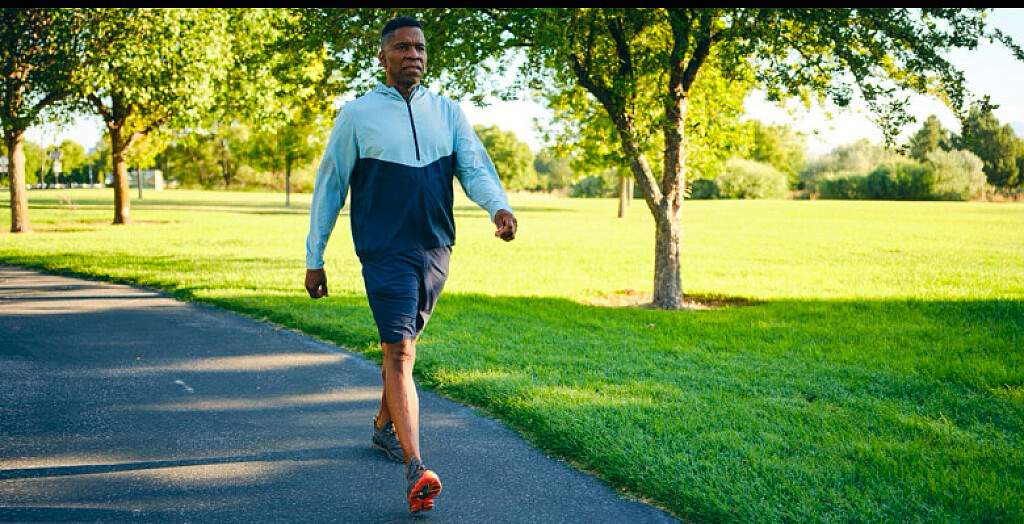Running News Daily
Running News Daily is edited by Bob Anderson. Send your news items to bob@mybestruns.com Advertising opportunities available. Train the Kenyan Way at KATA Kenya and Portugal owned and operated by Bob Anderson. Be sure to catch our movie A Long Run the movie KATA Running Camps and KATA Potato Farms - 31 now open in Kenya! https://kata.ke/
Index to Daily Posts · Sign Up For Updates · Run The World Feed
How to Make Your Walk a Workout
Trying to get more steps in? Use these strategies to level up your activity.
IF YOU'RE JUST starting your fitness journey or looking for ways to be less sedentary outside of your sessions in the gym or runs on the road, the best move you can make is taking a step. We’re talking about walking, the simplest, lowest-impact, and most underrated activity that can improve your physical and mental health while burning hundreds of additional calories.

No form of exercise is more intuitive to the masses than walking. Still, it can be challenging to find the time to increase your step count in this desk-bound, couch-loving world. If you walk often without much thought, you might find that going back and forth along the same path at the same pace becomes boring.
To help you up your steps and keep your walks interesting, we consulted Michele Stanten, the former fitness director of Prevention magazine, a walking coach, and the author of three books about walking, including The Walking Solution: Get People Walking for Results.
Why Should You Do Walking Workouts?
Going for walks is an exercise that you can do anywhere with no equipment; all you need is a great pair of walking shoes (and maybe a podcast). Walking is free
Improved Mental Health
If you want to fortify your mental health, a 2020 study found that those who took regular walks reported better emotional health than those who didn’t. Born on TikTok, the silent walking trend, where you walk free of distractions, can be a great way to unplug, experience a sense of calm, and be alone with your thoughts.
Similarly, Stanten has noticed some anecdotal social and mental benefits to walking outside more frequently.
“I think there are benefits to getting out and seeing the world at a different pace. It’s a chance to meet your neighbors; I walk my dog, and I’ll end up meeting people that way,” she says. “Walking is a great way to have tough conversations because you're walking side by side…and doing something that makes your body relax and feel better. So if you're having to have a difficult conversation, you're putting yourself in the best position to do it—whether that's with your kid, a spouse, or a coworker.”
Weight Loss (and Maintenance)
Walking is also a powerful weight loss and maintenance tool. Going for walks increases your NEAT (non-exercise activity thermogenesis), which accounts for the calories you burn throughout the day outside of intentional exercise. Weight loss is a numbers game: You need to burn more calories than you consume. Eating in a caloric deficit is crucial, but increasing your NEAT means you’ll burn more calories throughout the day, so you’ll lose weight more quickly and/or consume more food while still losing weight. A study published in the Journal of Nutrition found that among a group of 82 dieters, those who added two-and-a-half hours of weekly walking to their routine lost significantly more weight than the diet-only group.
Better Health Markers
Weight loss aside, walking can improve your overall health and reduce your all-cause mortality rate. A study published in the British Journal of Sports Medicine 2024 observed data from the UK Biobank on over 70,000 participants. The researchers concluded that any number of steps over 2,200 was associated with lower mortality and cardiovascular disease risk and that a step count between 9,000 and 10,500 daily steps best counteracted high sedentary
COUNT YOUR STEPS
You may assume that walking outside is an automatic de-stressor, but that’s not always the case. “I like to count my steps because it prevents me from thinking about all the stuff I have to do or ruminating over an argument I had.”
Try counting your steps on your route. Start by doing 50 fast steps and 100 slower steps for the duration of your walk.
WALK + STRENGTH
Stanten suggests adding strength exercises into your walking routine.
Try this: Start a timer and begin walking. At the top of every other minute, stop and do a set of an exercise like pushups, squats, lunges, or resistance band presses for five to 10 reps. After your set, begin walking again and then do another exercise at the top of the fourth minute. Be sure to cycle through a handful of different exercises.
BEAT YOUR TIME
Another strategy Stanten suggests, especially if you’re new to walking for exercise, is to pick a set distance or route.
Gamify your outing by challenging yourself to a race. Each time you go, try to cover that distance more quickly than your last time through. You don’t need to push yourself too
Park That Car
Try walking to any location a mile or less away from your home—your local coffee shop, laundromat, or gym. Not every walk needs to be an intentional workout. Your entire day factors into your step count, and errands can add up to thousands of additional steps.
Login to leave a comment




